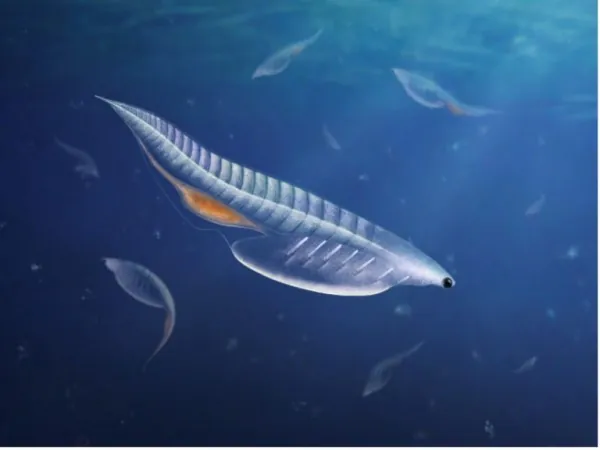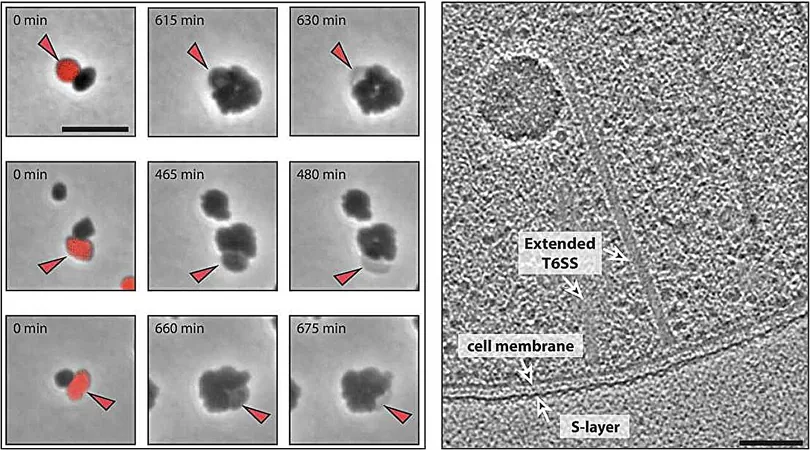
Groundbreaking Discovery of Cambrian Fossil in Utah Unveils Secrets of Vertebrate Evolution
2024-11-18
Author: Michael
Groundbreaking Discovery of Cambrian Fossil in Utah Unveils Secrets of Vertebrate Evolution
In the heart of Utah’s iconic geological landscapes, a remarkable fossil of a fish-like creature dating back nearly 500 million years has been unearthed, shedding light on the origins of vertebrates. The discovery of *Nuucichthys rhynchocephalus*, a newly identified species from Utah’s Marjum Formation, is a significant contribution to our understanding of early animal life during the Cambrian period—a time renowned for an explosion of biodiversity.
Harvard paleontologists Rudy Lerosey-Aubril and Javier Ortega-Hernández have carefully examined this three-quarter-inch long fossil, which astonishingly lacks bones or teeth. While the fossil may appear lightweight, it carries enormous scientific value. This finding, recently published in the journal *Royal Society Open Science*, serves as a crucial piece in the puzzle of how bone-bearing animals emerged from simple life forms.
The Cambrian Explosion: A Major Turning Point in Evolution
The Cambrian period, often referred to as the Cambrian Explosion, was a pivotal era in Earth’s history characterized by rapid diversification of marine life. This period saw the emergence of various species that would ultimately lead to the rich tapestry of animal life found today. Lerosey-Aubril, who is also a research scientist with Harvard’s Museum of Comparative Zoology, explained that during this time, organisms transitioned from being inconspicuous entities to becoming vital components of marine ecosystems.
“The Cambrian Explosion was a revolutionary phase where animals began to dominate the oceans,” he stated. However, the early vertebrates were primarily composed of soft tissues, making them difficult to fossilize, thus highlighting the significance of *Nuucichthys* as a rare find.
Decoding the Mysteries of *Nuucichthys***
*Nuucichthys* exemplifies a 'stem group' species—organisms that exhibit characteristics aligning them with modern vertebrates, but lack all the features typical of them. Notably, this ancient fish exhibited advanced anatomical traits, such as organized muscle blocks and complex eye structures, hinting at the intricate evolutionary journey that laid the foundation for vertebrate complexity.
Despite its rudimentary appearance, the presence of chevron-shaped muscle arrangements in *Nuucichthys* is a clear indicator of its vertebrate lineage. The creature's eyes were large and sophisticated, and it had a specialized branchial cavity, suggesting it was capable of both breathing and filtering food—a hint at the delicate ecological roles these early life forms played in their marine environments.
Unveiling Connections Through Fossil Comparisons
The discovery of *Nuucichthys* is particularly exciting because it stands as one of the few known early vertebrate fossils from the Western United States, with only three other similar species identified globally. This increases the comparative understanding of vertebrate evolution significantly. Previous fossils from China showed clear fin structures, raising questions about the anatomical diversity of early vertebrates in North America—until now.
Lerosey-Aubril explained that the absence of fins in *Nuucichthys* suggests it likely did not engage in active swimming like modern fish but instead thrived in surface waters, leveraging body undulation to access plankton-rich areas. The environment in which its remains were preserved is vital too; the pristine fossil site of Utah's Marjum Formation has allowed researchers to gain unprecedented clarity into these early creatures.
What Lies Ahead for Paleo-Research?
While *Nuucichthys* represents an exciting breakthrough in our understanding of vertebrate origins, it is just a fragment of a vastly unexplored Cambrian world. The Natural History Museum of Utah is home to thousands of Cambrian fossils, with ongoing research promising further revelations about the diverse life forms that emerged during this transformative period in Earth's history.
With each new discovery, scientists peel back the layers of time, revealing the intricate web of connections that bind ancient species to the present-day diversity of life. As research continues, we stand on the precipice of unlocking more secrets from a time when ancestors of vertebrates, arthropods, and countless other life forms were reshaping the oceans into dynamic ecosystems—a vibrant narrative waiting to unfold.









 Brasil (PT)
Brasil (PT)
 Canada (EN)
Canada (EN)
 Chile (ES)
Chile (ES)
 España (ES)
España (ES)
 France (FR)
France (FR)
 Hong Kong (EN)
Hong Kong (EN)
 Italia (IT)
Italia (IT)
 日本 (JA)
日本 (JA)
 Magyarország (HU)
Magyarország (HU)
 Norge (NO)
Norge (NO)
 Polska (PL)
Polska (PL)
 Schweiz (DE)
Schweiz (DE)
 Singapore (EN)
Singapore (EN)
 Sverige (SV)
Sverige (SV)
 Suomi (FI)
Suomi (FI)
 Türkiye (TR)
Türkiye (TR)